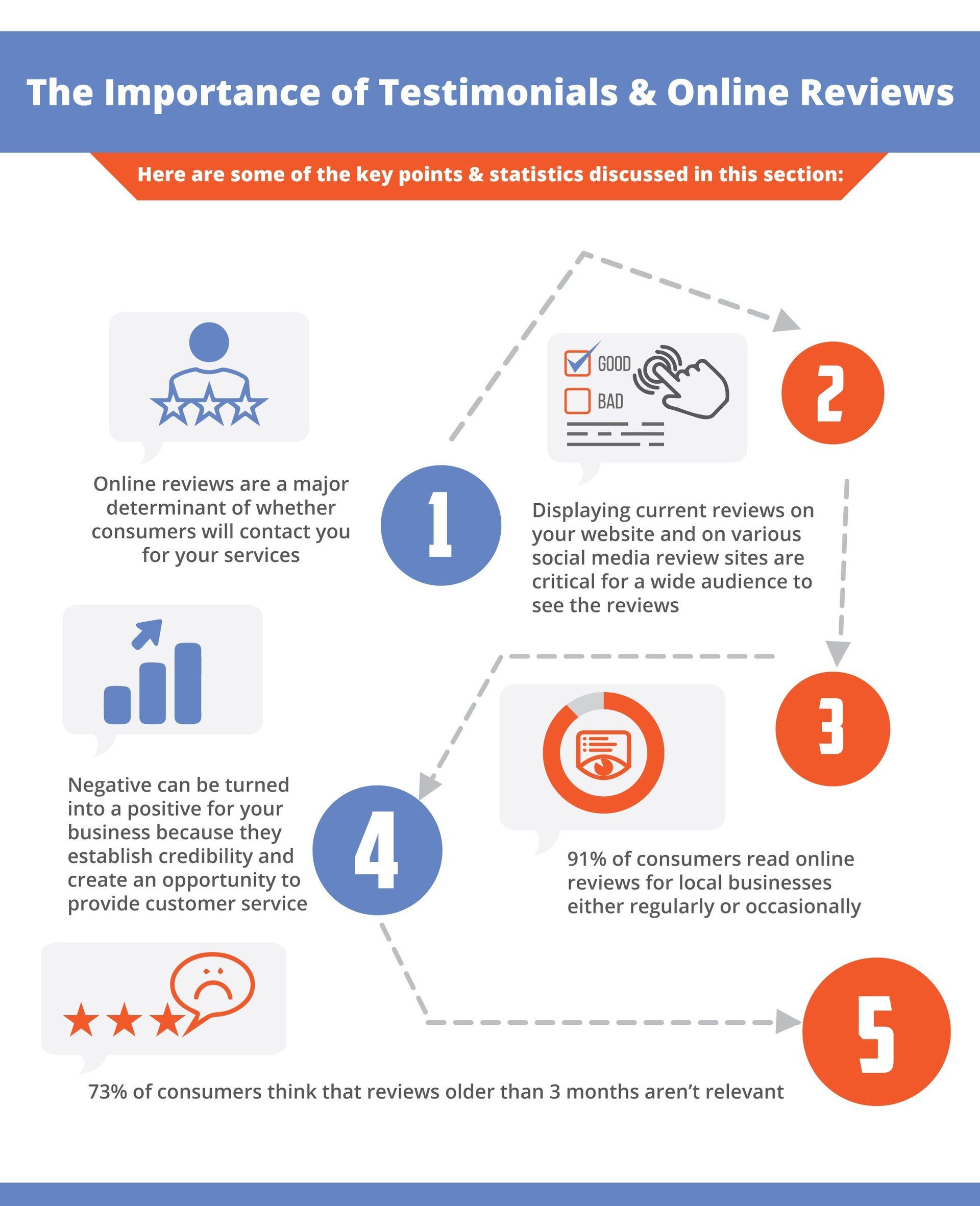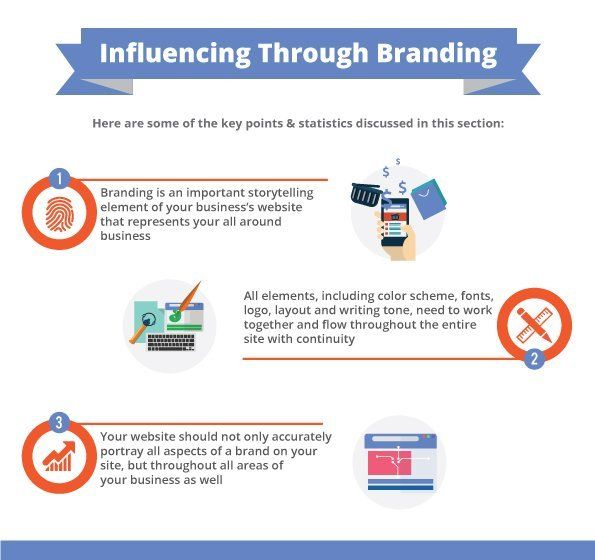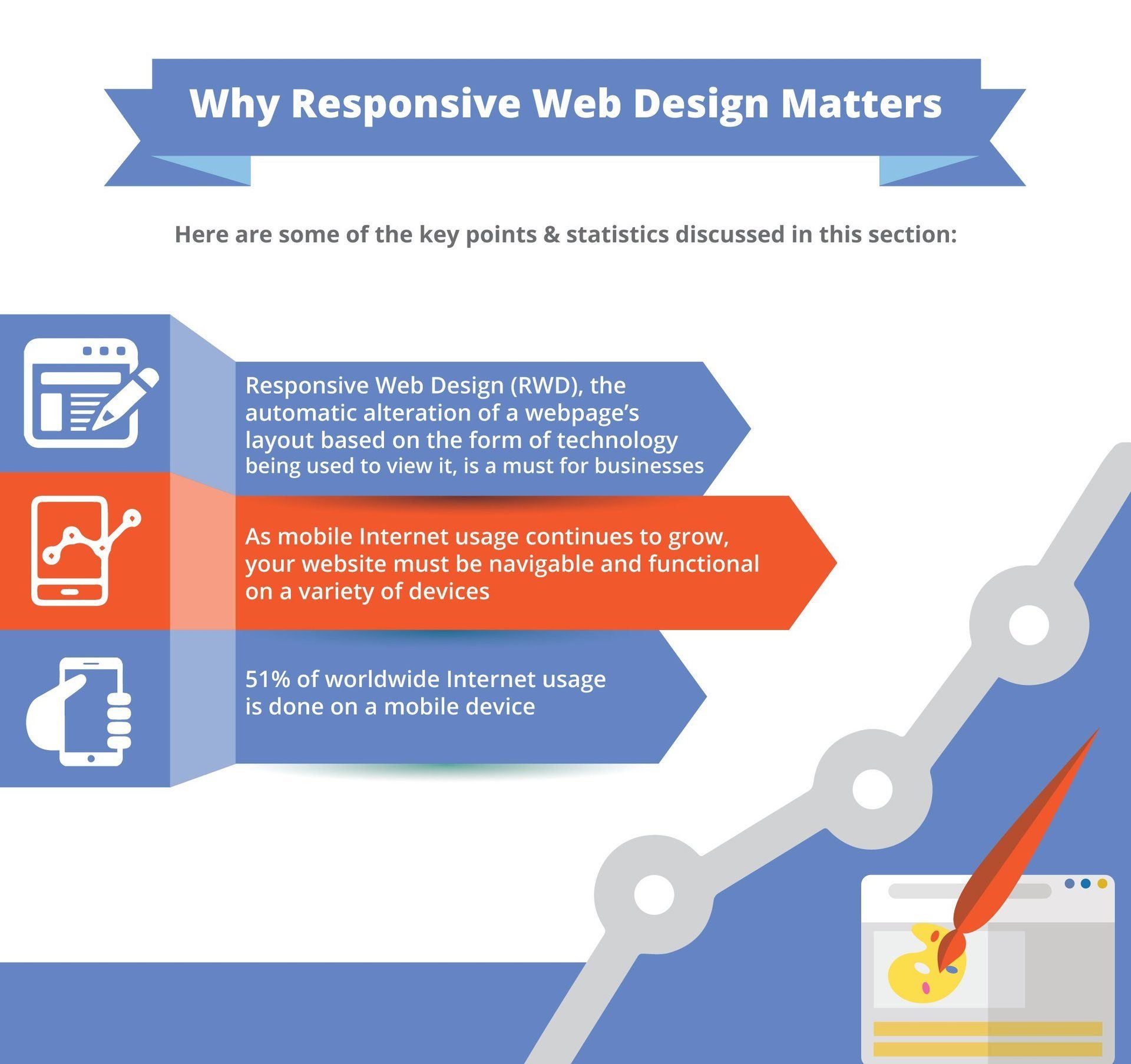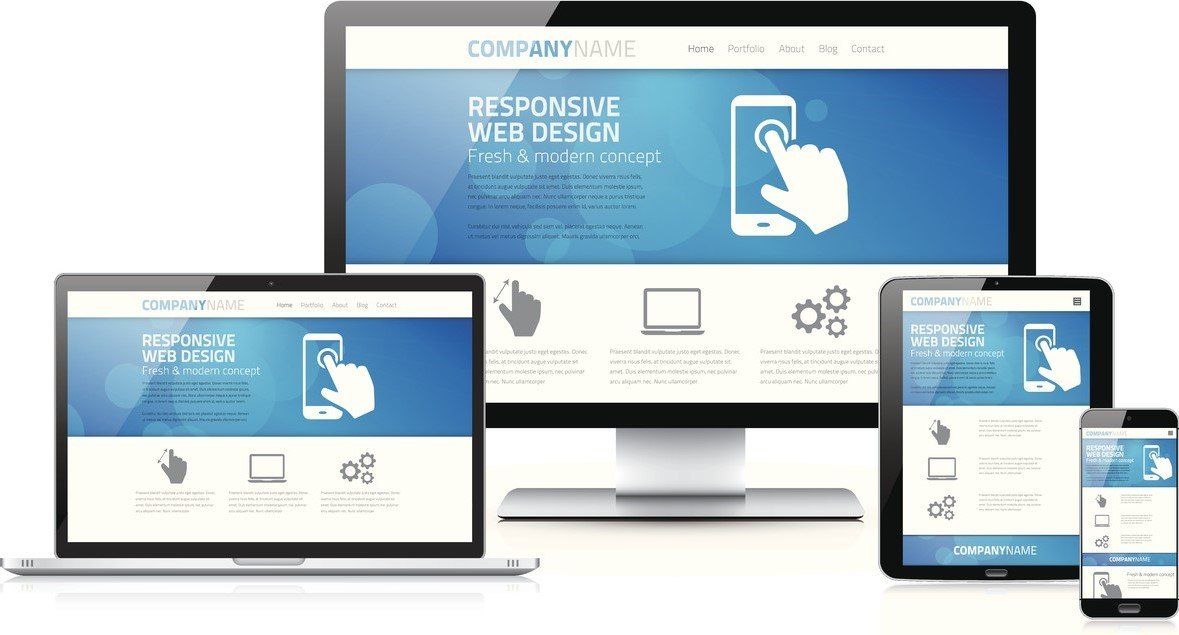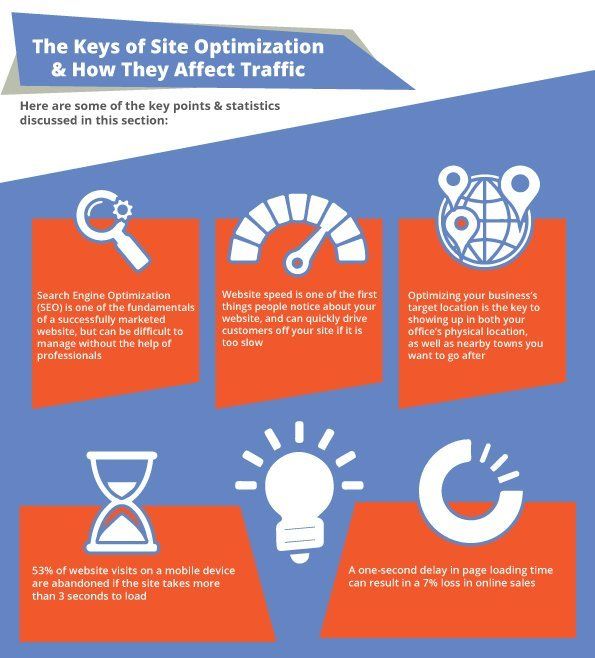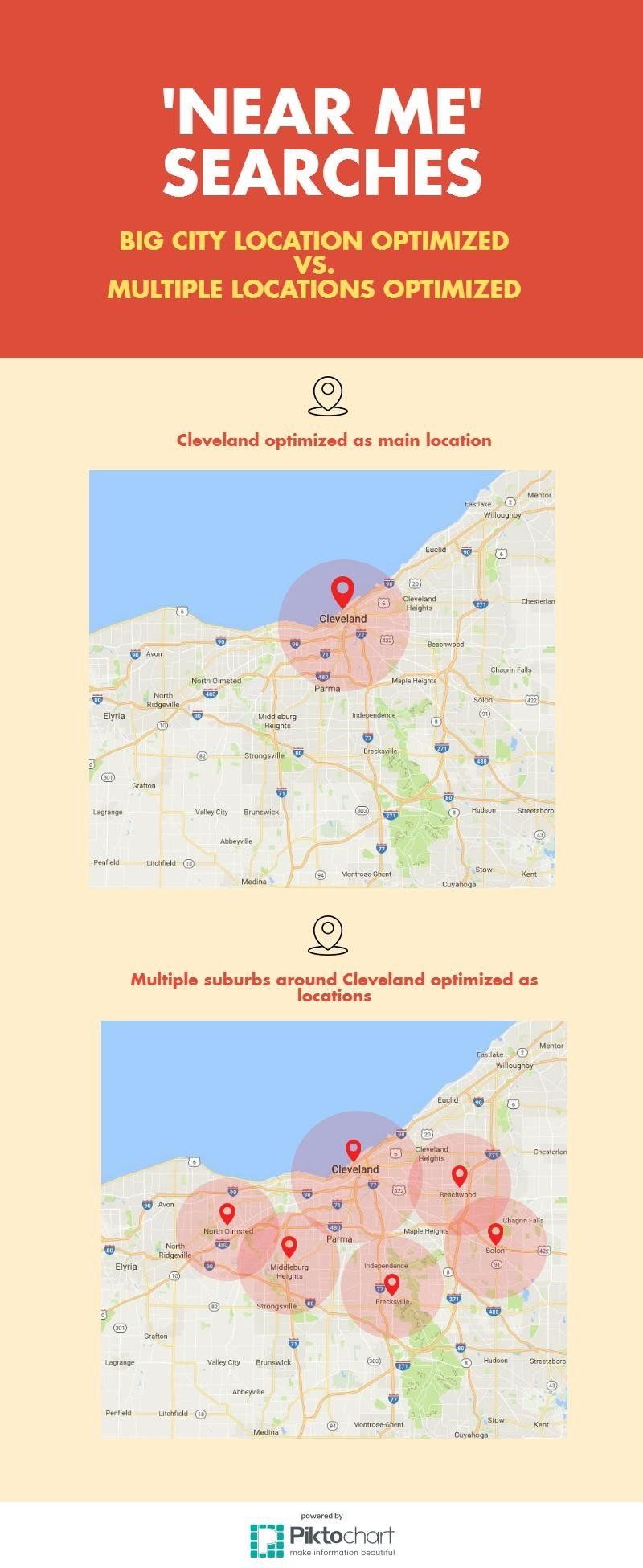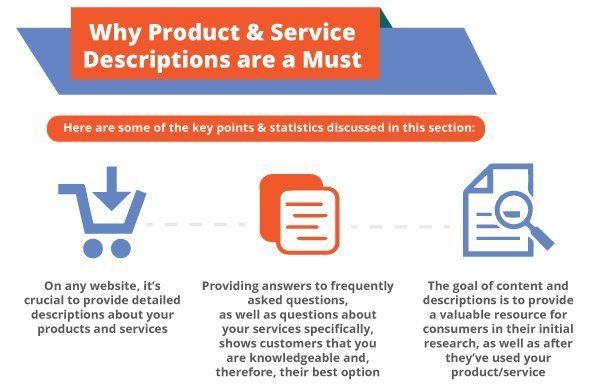Is Your Website Helping or Hurting Your Business?
The 7 Elements You Need to Know About
When you look at your business’s website, are you proud of the way your company is represented? Do you feel like your level of work is accurately portrayed through your photos, web design and site optimization? If you can’t stand using your own site, chances are that your customers won’t either. But before you give up on your company’s online presence, consider the difference your business could see when your website is gaining you new clients rather than repelling them.
When it comes to your company’s online presence, your website can go one of two ways: either it can help your business, or it can hurt your business.
Obviously, the point of your website is to help get people into your store or showroom—virtual or real—and investing in your services. The last thing you want to do is drive people away by portraying an outdated business. Therefore, it’s important that your site incorporates various elements to properly market your business, display your services and prove you are the best industry professional around.
When it comes to leveraging your business, these are the 7 elements that could be helping your website convert visitors into customers if used to your advantage, but could also be hurting your website, if not properly maintained.
1. Updated Website
Our team of digital marketing experts agree: the worst enemy for a business’s online presence is an outdated website.
There are several elements of your website that might be considered outdated, including content, design and images. Even having just one of these sections not up-to-date can hurt your website’s effectiveness, because it makes your overall business appear to be outdated
as well. People are less likely to trust a business with a website that looks like it hasn’t seen an update in over a decade, especially if they only landed on your website through a search.
When you look at your business’s website, ask yourself if the quality of your work is accurately shown.
- Does the design reflect your brand?
- Do the photos on your site show the work/products you are most proud of? Are the photos recent?
- Is all the content and information about your services correct?
- If you have a blog, when was the last time someone published an article?
Design
Designing a modern website yourself can be tricky, especially if you’re not tech-savvy. But if you want to attract people to your business, a modern and well-designed site is an absolute must. Outdated websites will
turn people away if it looks like you haven’t touched your site since the Internet was invented. Keep it simple by going with large images, non-distracting backgrounds and a color scheme that fits your brand.
Why does this matter?
In addition to attracting potential clients, this will leave a lasting impression on Google. The search engine takes website datedness and
content freshness into account when ranking your website. The more updates you make to your site, the better it will look to Google, and the search engine is more likely to rank your site as the best option for people who are searching for local services like yours. Of course, it’s not quite that simple, but content freshness does factor into Google’s ranking system.
Photos
While refreshing content on any website is certainly important, updated photos are particularly imperative for businesses in a service-based industry. Most of your clients will either choose to call you or move on to another business based on the work they see on your website. This is why it is crucial to have current projects displayed. If your photos haven’t been updated since the early 2000s, people will think your style is outdated, and will look for a more modern company.
In the real estate industry, listings with professionally photographed homes saw an average 139% increase in clickscompared to similar listings with stock photos or unprofessional photos. Plenty of other industries similarly rely on the images potential clients see on your site to sell your goods or services, making the quality of images equally important.
If applicable, before-and-after photos can put your website over the top. Also keep in mind that real photos of your work are always better than stock photos. This really illustrates what your business is capable of achieving, and gets the viewer to start visualizing how your business can provide the solution they’re looking for. You’ll have a much bigger impact on leads if they can see the transformations you’ve done for others in the same situation.
Quantity and Quality
We’ve touched how important it is to have not just any pictures, but updated pictures on your site. Now, it’s time to think about the quality of those pictures. This is where you want to show-off your professional, high-end products and services. Nowadays, it’s easier than ever to take decent photos on your phone. For some, this might suffice; but when it comes to displaying your work online, hiring a professional photographer is probably the smarter business decision.
A professional photographer can make great results look extraordinary with the right lighting and angles. You’ll be amazed at how higher-quality images attract more leads, because customers see the professionalism in your work. Sure, it’s more expensive to hire a photographer to do the work. But when your average sale way up, you’ll be glad you spent the money to get first-class photos.
Increases in sales are a real result of an updated website beyond professional photos. In the home remodeling and improvement industry, having an updated website is particularly important if you want to increase your quality of sales. Take Outdoor-FX, an outdoor home improvement and design company, for example. In 2011, Bryan Critser, president of Outdoor-FX, decided to see if a website redesign and digital marketing strategy created by a professional team could change his business.
“Our site was basically completely invisible on the Internet,” Critser said. “It served no purpose other than being a digital business card.” But hiring a company to redesign the website and make it SEO-friendly completely changed Outdoor-FX’s business.
“ It was a game-changing decision and move for me, business-wise .”
Since the company’s prime source of marketing and leads comes from its website, Critser said his online presence has gone from being nearly invisible to ranking for all categories and terms the company aims to show up for. After undergoing a strategic website redesign, Outdoor-FX has seen profits double since the start of the business five years ago.
“It has essentially been the best investment for our business.”
The Bottom Line: An outdated website is the #1 problem any sales-related businesses face online. Having an updated and professional website can easily increase your sales, just by attracting more leads and convincing customers that your product or service is worth their money. A few simple changes could make a huge difference in whether your site is hurting your business or helping it.
2. Utilization of Testimonials & Reviews
Online reviews have been around a while. But in the past few years, they’ve increasingly become more important than ever, and the statistics to support its relevancy
are overwhelming. Think about it: when you are considering buying a product on Amazon or searching for a restaurant to go to, do you ever look at the reviews to help make your decision? The answer, most likely, is yes.
Today, you can find just about anything online, whether that’s a product or a service, and everyone out there is in the business of marketing. Oftentimes, it’s hard to tell if the images and descriptions are really what you’re getting, or if you’re being scammed. But when we see online reviews from real people just like ourselves who are willing to testify for this brand, it gives us peace of mind that we’re making the right decision.
In a 2016 Local Consumer Review Surveyconducted by BrightLocal, 91 percent of consumers read online reviews for local businesses either regularly or occasionally
. This means that only 9 percent of consumers don’t read reviews at all. If you don’t have any online reviews, or if they aren’t properly displayed on your site (more on this in a minute), you could be losing out on 91 percent of potential customers who make their purchasing decisions based on online reviews of your business.
Mark Kresge, president of kitchen and bath remodeling company Kresge Contracting, said having testimonials shown on his site had a direct impact on attracting new, high-profile clients.
“ When clients are signing paperwork to move forward with their remodeling project, they mention the reason they chose to work with us was because of our online reviews,” Kresge said.
Since Kresge Contracting started requesting and displaying reviews, it saw an increase in both the number of leads and overall project price. You can see why it is crucial to take advantage of satisfied customers and get them to leave you a review.
Displaying Reviews & Relevancy
Part of utilizing your online reviews is managing where those reviews are displayed. Reviews have become an important local ranking factor, as Google boosts companies with good online reputations over those with no reputation. Basically, if your company has a bunch of great reviews, you’re more likely to show up above your local competitor who has only a few online reviews.
Great reviews—and a lot of them—boost your business’s online credibility.
For those reviews to have merit with consumers, it’s important for them to be posted on various social media and review sites, where viewers can see who wrote the review and trust that it’s a legitimate post. Sites like Facebook, Yelp, Google and Houzz are some of the top places people look for reputable reviews.
Once you have a collection of positive reviews, you will want to display them on your own website, so visitors can view all your testimonials directly on your site. By utilizing an onsite testimonials section, you’ll be able to control which reviews show up on your website. For example, most successful businesses choose to only display 4- and 5-star reviews on their site.
Even positive reviews are no good if they are outdated. Just like the
design of your website , it’s crucial that some of your reviews are current. In the same BrightLocal consumer survey mentioned above,
73 percent of consumers think that reviews older than 3 months aren’t relevant . This means that you need to constantly be asking customers for reviews if you want to appear as an up-to-date business. It’s great if you have hundreds of glowing reviews, but if they’re all from over a year ago, they won’t help your business.
Negative Reviews
Now, you may be wondering, what about negative reviews?
Most businesses hate negative reviews, and with good reason. You never want anyone making a complaint about less-than-stellar service from your business. But it is actually possible to utilize negative reviewsand turn them into a positive for your business.
The first thing you want to do when you see a negative review about your business is respond. Start by apologizing about the experience, and offer a solution of some sort. If they weren’t happy with the service they received, do what you can to fix the issue. If there’s nothing you can do at this point, tell them you are working to fix the issue or offer an explanation as to why something happened the way it did, making sure you keep an understanding and respectful tone. Even if you are not able to change something, offering to make up for it goes a long way in customer service.
Negative reviews also allow you to find problems within your business and solve them. You may not have been aware of an issue that was brought to light by a customer. Whether you can learn from the review or not, you can still use it to your advantage by publicly responding, which will show consumers that even if they have a complaint, you are willing to go out of your way to make the customer happy.
The goal of publicly responding and offering a solution is to try to win them back as a customer, whether that means they will personally use your product or services again or recommend you to a friend. If you can get back into your customer’s good graces after a negative review, you’ve provided excellent customer service.
It’s also important to remember that having negative reviews make your business seem more credible. Of course, you don’t want a long series of bad reviews, but having a few mediocre reviews gives people peace of mind that all the reviews of your business are legitimate. When someone sees a company with all 5-star reviews, it can look suspicious, and leave the customer wondering if they’re being tricked.
3. Branding
When it comes to marketing your business online, making your business’s website reflect your brand is an absolute must in any service-based industry. It’s what sets you apart from your competition, establishes your credibility and shows people why you are the best choice for them.
Metric Marketing’s “
Guide to The Importance of Branding in Your Marketing ” breaks branding down to a simple definition:
“In its most basic form, your brand is your promise to your customer. It tells your consumers what they can expect from your products and services. It is the total sum of their experiences and perceptions—some of which you can influence, and some that you cannot.”
It may seem like something only big-name companies would focus on, but branding is a powerful tool that can change peoples’ perception of your company, if harnessed correctly.
Branding your business is similar to being a professional: if it looks like you have your stuff together, people will assume you really do have your stuff together. Maybe you’re a family business that has been around for over 30 years, or perhaps you’re just building your company. Either way, if you have a brand that is professional and portrays the appearance you are going for, you’ll establish credibility and attract the audience you want.
It’s All About the Details
One of the easiest and most influential aspects of branding for your business is website design. We’ve touched on the importance of this already in the
section on outdated websites, but when it comes to service-based sites, design works hand-in-hand with your brand.
In terms of your brand, design can be broken down into many different elements that all work together to tell a story about your business.
For example, looking at the font used throughout a company’s website allows you to easily perceive the company’s style and tone. Cursive font gives the appearance of class and tradition, in the same way that simple, geometric fonts portray modernity and innovation. Of course, font choice is just one of the details that tells a story about your company. Other elements include color scheme, logo, layout and writing tone. When all these elements, and many more, are combined, the
look of your brand is created.
Continuity is Key
The key is to make sure your brand standards are continued throughout your site, as well as in your actual services. There needs to be a level of consistency on every page of your website, as well as in your store logos, marketing campaigns, on social media and everywhere else your business is represented. If you portray your business as being sleek and modern, you better be prepared to provide products or services that mimic that sleek and modern tone for clients who were drawn to you because of your online representation of your business.
The Bottom Line: When you look at your current website, are you giving off the right impression about your business? Do you have a distinct brand that is continued throughout your website and in your service? If not, it’s time to step up your game and develop your business’s brand.
4. Responsiveness
Responsive web design (RWD), is
the automatic alteration of a webpage’s layout based on the form of technology being used to view it .
RWD takes the content of your website and changes it to fit the screen its being viewed on, whether that’s a large desktop screen or a much smaller smartphone screen.
That might sound a bit confusing for someone who isn’t extremely knowledgeable in web design and coding, but before you skip over this section, let us make it a little more applicable to small businesses.
Format Changes
When you look at a website on your cell phone, you probably notice that it looks different than when you view it on a tablet or desktop computer. The content doesn’t change, but the format you see it in is slightly different. This is an example of responsive website design. RWD makes it possible for various devices to alter features like font size, image viewing and content scaling, as well as a search engine’s capability of recognizing your site.
This responsiveness is crucial to the success of your website. More and more people are using mobile devices over desktop computers to browse the Internet. In fact,
over 50 percent of
worldwide Internet usage
is done on a mobile device , meaning more people are searching on their phones and tablets than on a desktop computer.
Navigability
With that in mind, you can see why it’s important to make sure your website responds when users try to access it on their phones. But a responsive website is about more than just the layout changing from device to device; it’s also about site structure and making sure users can easily find what they are looking for when the format of your site changes on the device they are using.
Easy Scheduling
For service-based companies, RWD can be particularly useful in allowing visitors to schedule an appointment with you online.
Research has shown
that more people are using mobile devices to fill out a form, rather than make a call for an appointment. Therefore, the online scheduling portion of your website must be shown in a way that is compatible with mobile devices for it to work properly and attract leads.
Kitchen remodeling company
Cabinets Plus saw an increase in appointments just from adding an online scheduling feature to its website. Dave Kunzweiler, a designer at Cabinets Plus, said that the appointment scheduling function didn’t just get people filling out a form; it got clients to come into the showroom.
“Before we added the online scheduling feature, we got little to no response in filling out the form on our site. After installing the online scheduling feature, we received seven online appointments, all of whom showed up on time and ended up being good leads.”
More and more people are using their smart phones and tablets to book appointments online, rather than from a desktop computer. So, when people come across a website that is difficult to navigate and read, they are likely to leave that website and choose one that is more accessible, which just might be your local competitor.
The Bottom Line: There are a few factors that play into responsive web design, including mobile optimization, site structure and layout. If you have a website that incorporates responsive design, you’ll see a huge difference in the amount of people staying on your website and the leads you get. But if your website doesn’t allow for compatibility across all devices, you end up missing out on potential leads.
5. Site Optimization
SEO. There it is, that daunting acronym. If you’ve done any research whatsoever about having a successful website, you know that SEO, or Search Engine Optimization, is the foundation of an effective site. It means that your website does a good job of incorporating a bunch of elements, like specific keywords, location and load time, making it easy for people to find your site when they’re searching for local services like yours.
For the sake of keeping this at a basic level, we won’t delve too deep into
SEO and how it works . But there are a few parts of it that you can easily incorporate into your website that can help immensely.
Website Speed
One of the first things people notice about the optimization of your site is loading time. The longer it takes your web pages and images to load,
the more people are driven away . No one wants to wait 30 seconds for every page to load, especially on a website where people are likely to be scrolling through pictures.
According to
data collected by Google in 2016, 53 percent of website visits on a mobile device are abandoned if the site takes more than three seconds to load. That’s pretty significant when you think that over half your leads are dropping if your mobile site takes more than 3 seconds to load. That, in turn, affects your overall sales.
Additionally, a 2012 study by customer data platform Tagman (now
Ensighten ), found that
a one-second delay in page loading time can result in a 7 percent loss in online sales . So, the longer it takes for your website to load, the more sales you are losing. For smaller businesses, that’s a pretty significant loss.
We live in an age where information is available at our fingertips, and if people can’t access something immediately through you, they will most likely move on to a faster site, leaving you in the dust. In a way, this relates to having an updated site, too, as people view sites with slow load times as outdated and obsolete—neither of which you want to be.
What can you do about this?
There are a number of technical ways to speed up your site’s loading time, but the easiest way is to modify your design. The Daily Egg states in an
article , “the quickest way to improve site speed is to simplify your design.” There are a number of elements that play into this, like reducing the number of components on each page or combining multiple style sheets.
Having fewer high-quality images on your site also helps with website speed, although this contradicts the goal of showing off your work on your website. Luckily, there is a way to increase website speed without getting rid of all your images. However, this is pretty technical, which is why we recommend
hiring a pro for stuff like this. It’s important to get it right.
Location
Another way to make sure your site is SEO-friendly is making your location well-known. Visitors should know where your showroom is located, as well as what areas you serve. This is an important difference to note, because you want people to know that the town your showroom is in is not the only location you serve. Mentioning surrounding cities or suburbs that you also want to target is a good way to
broaden your location and where you show up in “local” searches.
Including this information in different ways—throughout the content, on your “Contact Us” page and in the NAP (name, address, phone number) at the bottom of each page—is easy. If you have a professional working on your site, they can add various schema codes and Google Maps modules to further optimize your location. But mentioning a handful of locations you want to target is a good place to start.
The Bottom Line: When you’re simply looking at SEO from a basic level, the speed and location optimization of your website are two key factors that should be emphasized in helping your website rank locally. There are plenty more SEO elements that are important to utilize if you want your website to show up for people looking for services in your location, but those are best left to professionals.
6. Specified Call-to-Action
The purpose of a call-to-action (CTA) is, first and foremost, to provide an instruction to website visitors to contact you immediately, as well as a reason why. It tells them what they will gain from working with you and motivates them to take action to make that happen. Therefore, a good CTA will invoke the customer to contact you on the spot.
Here's how you can create the perfect call-to-action that will have consumers off your site and in your office.
Consider Your CTA Options
Whatever you choose as your CTA, make sure it’s appropriate for your line of work. Some of the most popular calls-to-action for service-based businesses include something along these lines:
- “Call today for a free quote”
- “Stop by our showroom to get started”
- “Fill out the form below to schedule your free, in-person consultation”
You’ll find that there really isn’t much of a difference in CTAs . Some are long and fancy, while others take the short and sweet route. Either way, all CTAs tell the user to take action toward using your service.
Choose Your Preferred Method of Contact
The first step in coming up with your CTA is deciding how you want people to contact you. If you aren’t at your desk to answer the phone all day, provide a contact form that sends you an email. Or, if you never check your email, only list a phone number or encourage leads to come into your showroom.
Including an online scheduling feature is also a good option, so you can have customers schedule an appointment or phone call at a time that works for them.
No matter how you want people to contact you, having a phone number and your location clearly displayed throughout your website is an absolute must. If your phone number is displayed at all times—like in the top right corner—it shows your business is easily accessible at all times. Plus, having a local area code that people recognize shows that you aren’t just some corporate, 1-800 company. It gives them a friendly reminder that you’re right in their neighborhood.
Include Your Location
Speaking of the importance of location, having your address or location mentioned in your CTA is another important feature. Look at the following two CTAs and notice the subtle difference:
- Visit our showroom for a free consultation
- Visit our showroom in Dublin for a free consultation
Make Sure You Provide Value
Lastly, you have to give people a reason to contact you. With so many other choices out there, what makes you the best option? Tell clients what they will gain from working with you right off the bat. Oftentimes, this includes the mention of a discount, promotion or award-winning service. Whatever it is, it must provide a value to the customer and convince him or her to contact you immediately.
The Bottom Line: It may seem like a minor part of your business’s website, but if done incorrectly, your call-to-action could end up hurting your business.
7. Product/Service Descriptions
While it’s obviously important to have quality images of your products or service jobs on your website, you don’t want to overlook the
content portion of your site , particularly in the form of descriptions. Providing the visitor with detailed product and service descriptions gives a better idea of what to expect when working with you.
A great example of why service descriptions are so important is the home remodeling industry. Most people who are looking to remodel their kitchen or bathroom have never undergone a home remodel and have no idea what to expect. It’s easy for them to look at pictures of beautifully remodeled kitchens or upgraded master bathrooms and know what they want, but that doesn’t mean they understand what it takes to get to that end result.
You can see from this example why it is useful to provide additional information about products and services on your site, no matter what industry you work in. There are always people who are unfamiliar with what you do, so if you can answer questions before talking to them, you’re off to a good start.
Provide Answers
The first thing customers do before starting a renovation is research. This is when they look at all their options—including you—and research what it will take to get exactly what they want. Presenting the information they’re looking for that is specific to your products and services makes this stage much easier on the client, and shows them you have all the resources they need, making you the best possible choice.
When it comes to common questions like “ how long does this service take ,” or “ how long does this product last ,” there are plenty of resources on the web to provide answers. But your customers want those questions answered by you, the business they’ll be working with on their own project. It’s more beneficial for them to look at your services and know how long it took you to complete the project, or how long your product lasted.
Be Honest About Challenges
These descriptions can even include specific challenges and victories you commonly face. In most service-based industries, it’s common to have bumps in the road when catering to each customer’s needs. If you’re providing a service that required adjustments to work around a specific time or limited budget—issues that many people fear will become a problem for them—be open about how you offered a solution to others. Not only does this provide peace of mind that you can deal with issues that may come up, but it also lets the customer know he or she is not the first to have this problem. Your business instantly becomes more personable.
Brag About Your Accolades
Along with product and service descriptions, it’s always a good idea to add any additional information to your site that proves your qualifications. This could include professional associations you belong to, certifications you have, team bios, charities supported and awards won. Including valuable accolades (awards & affiliations) and personal information (team bios) makes you look both professional and personable. Before you even sit down with a client to discuss a project, they’ll already have a good idea of who you are, how you work and what to expect from working with you.
The Bottom Line: You’ll be amazed at how beneficial detailed service descriptions can be for your website. If your website can provide useful information about your services and descriptions about the products displayed on your site, your website will become a valuable resource for potential clients.
Don’t Let Your Website Hurt Your Business
Clearly, there is a lot you can do to leverage your business’s website to attract more customers. But if all of these elements are not utilized correctly, they can do damage to your websites performance, in turn hurting your business. The bottom line is that today, you really need to have a strong online presence for your website to appear when people are looking for local businesses like yours, and motivate customers to use your services. And if you take advantage of these elements on your website, your business is sure to give off the professional appearance you want.
Get the Latest Content in Your Inbox
Want to be the first to know about new content? Sign up to get our weekly blog posts sent to your email!





